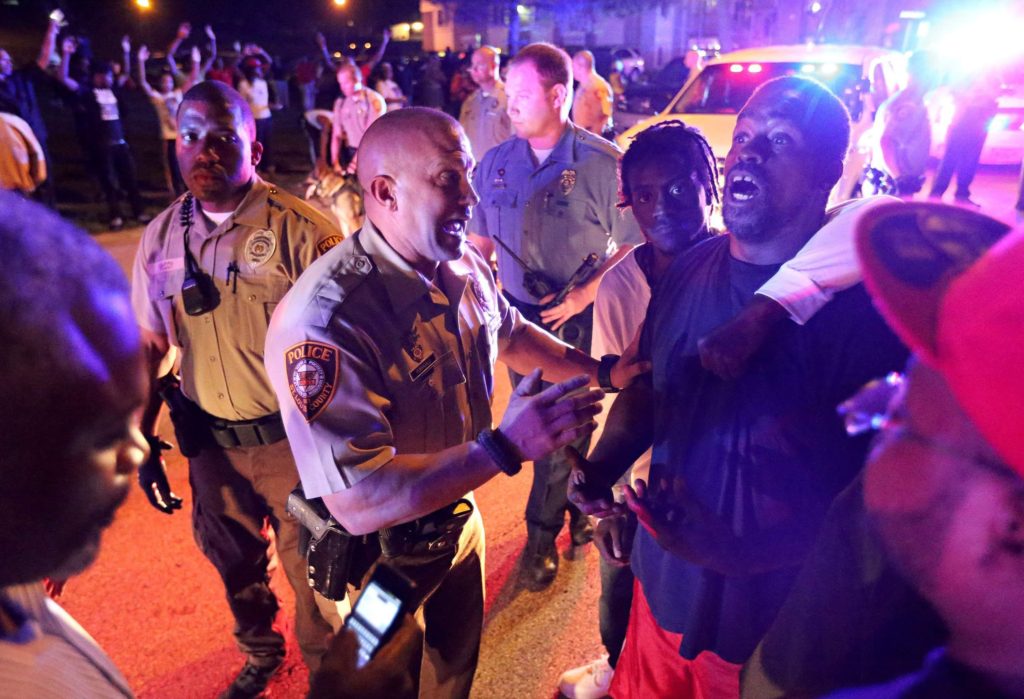Michael Brown was an 18-year-old black man who died Saturday, gunned down by police outside his apartment complex. He was scheduled to begin classes at Vatterott College today and, according to friends who agreed to interviews, Brown wanted to be a business owner.
News of the shooting spread quickly through the Ferguson, Mo. neighborhood. Brown’s body had been left in the street for hours, according to media reports, and photos of the scene were circulated.
While there are conjectural stories of a struggle, that perhaps Brown, who was unarmed, tried to take a gun from the officer who ultimately shot him multiple times as he ran. a full investigation is not complete and likely won’t be completed for weeks.
Mourning began on social media, rumors were circulated and those local and outraged took to the streets. Protests and vigils were planned on Sunday and, that evening, some turned violent. Gunshots rang out. Stores were looted, and some were burned. Confrontations with police are ongoing.

In 2009, David Klinger, an associate professor at the University of Missouri — St. Louis and a former police officer, released his first study of shootings by members of the St. Louis Metropolitan Police Department. The study raised major concerns about the frequency of deadly force by local officers, and how investigations into shootings were conducted. In 2012, the study was duplicated. While improvements were found, especially in the area of investigations into use of deadly force, Klinger advocated for more transparency and public accountability — releasing the names of officers involved and posting information on a public website.
Klingers recommendations have not been followed in the wake of Brown’s shooting. The officer, yet unnamed, has been placed on administrative leave. Outside of a traditional news conference, there has been little disclosure.
Distrust has permeated the incident, and many local leaders have called for the investigation to be taken over by federal authorities. The local NAACP already has an ongoing federal complaint against one of the local departments in connection with racial profiling.
The Editorial Board for the St. Louis Post-Dispatch has advocated in favor of the jurisdiction switch as well as for “elevat[ing] the importance of annual studies of racial profiling by police in the region and the state.”
Disparity rates in Missouri appear to be similar what we have in Iowa, with black Missourians 66 percent more likely during 2013 to be stopped and searched by police, despite the likelihood of contraband being higher among whites.
The St. Louis Editorial Board notes that in Ferguson, where Brown died, “police pulled over blacks at a 37 percent higher rate than whites compared to their relative populations.” And, “Black drivers were twice as likely to be searched and twice as likely to be arrested compared to white drivers.”
Such statistics alone, the Board notes, “don’t prove racial profiling.”
“But those numbers plus a dead man in the street make a strong case for deserving a closer look.”
Here in Iowa, we can learn from the situation in Missouri. We can choose to be proactive. It should not take a dead man lying in the street.
This blog post by Lynda Waddington originally published on The Gazette website on Aug. 11, 2014. Photo credit: David Carson/St. Louis Post-Dispatch/MCT
